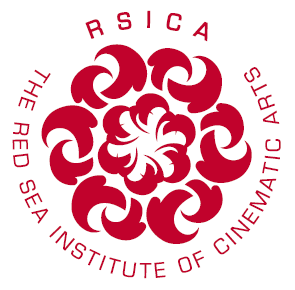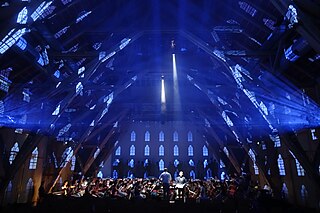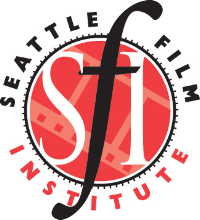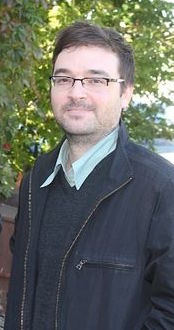A film school is an educational institution dedicated to teaching aspects of filmmaking, including such subjects as film production, film theory, digital media production, and screenwriting. Film history courses and hands-on technical training are usually incorporated into most film school curricula. Technical training may include instruction in the use and operation of cameras, lighting equipment, film or video editing equipment and software, and other relevant equipment. Film schools may also include courses and training in such subjects as television production, broadcasting, audio engineering, and animation.
The formal teaching of film began with theory rather than practical technical training starting soon after the development of the filmmaking process in the 1890s. Early film theorists were more interested in writing essays on film theory than in teaching students in a classroom environment. The Moscow Film School was founded in 1919 with Russian filmmakers including Sergei Eisenstein, Vsevolod Pudovkin, and Lev Kuleshov serving as faculty to disseminate their very distinct viewpoints on the purpose of film. [1]
Those seeking to learn the technical craft of filmmaking in the early days of cinema were largely self-taught engineers or still photographers who experimented with new film technology. With the rise of commercial filmmaking in the 1920s, most notably the Hollywood studio system, those seeking to learn the technical skills of filmmaking most often started at the bottom of a hierarchical system and apprenticed under a more experienced person to learn the trade. Filmmakers such as Alfred Hitchcock and David Lean started in this way, beginning as a title card designer and clapperboard assistant, respectively, in the early 1920s. The USC School of Cinematic Arts was founded in the midst of this Hollywood system in 1929, and continues to be widely recognized as one of the most prestigious film schools in the world. [2] The University of Southern California was the first university in the country to offer a Bachelor of Arts degree in film. [3]
The tradition of apprenticing up through a hierarchical system continues to this day within film studios and in television in many technical positions such as gaffers, grips, camera operators, and even into post-production with editing and color correction. Independent lower budget filmmaking in the post-war period using portable 16mm film cameras allowed filmmakers like John Cassavetes in the United States, along with members of the French New Wave and Italian Neorealism in Europe, to circumvent the classical system.
The notion of a granting a four-year college degree in film grew more popular in the 1960s with the founding of prestigious film departments like the New York University Tisch School of the Arts (1965), Walt Disney founded California Institute of the Arts (1961), the University of Texas department of Radio-Television-Film (1965) and the Columbia University School of the Arts (1965). [4] Over the years competition for admissions to these programs has steadily increased with many undergraduate programs accepting less than 10% of applicants, and with even more stringent selection for graduate programs.
In the 1990s and 2000s, the increased difficulties in getting into and the financial costs of attending these programs have caused many to spend their money self-financing their own features or attending a shorter trade school program for around the same costs. Film trade schools however rarely offer more than technical knowledge, and often cost more than a degree from a public university without providing the security of a four-year college degree to fall back on.
A film school may be part of an existing public or private college or university, or part of a privately owned for-profit institution. Depending on whether the curriculum of a film school meets its state's academic requirements for the conferral of a degree, completion of studies in a film school may culminate in an undergraduate or graduate degree, or a certificate of completion. Some institutions, both accredited and non-accredited, run shorter workshop and conservatory programs [5] concurrent to longer degree courses.
Not only the types of courses on offer but also the content, cost, and duration of the courses differs greatly between larger institutions and bespoke film schools. Universities offer courses ranging from 1 to 4 years, with the majority lasting 3 or 4 years. Conversely, films schools focus on shorter technical courses of 1 or 2 years.[ citation needed ]
Many film schools still teach students how to use actual film in their productions, although the incorporation of digital media in film school curricula has risen drastically in recent years. Some schools offer only digital filmmaking courses, eschewing instruction in the medium of film altogether. The use of digital cameras and digital media is significantly less expensive than film cameras and film stock, and allows a film school or department to offer more equipment for students with which to learn and use for their projects. In addition, digital media (such as DVD) is often used for in-class screenings.
In recent years, online film schools of sorts have sprung up teaching filmmaking through articles, tutorial videos, and interactive forums. The next generation of digital cinematography using the large sensors and manual features available in still DSLR cameras has lowered the barrier further towards creating inexpensive digital video that compares closely to 35mm film. [6]
Professionals in the film industry hold a variety of opinions on the relevance of a degree in film in relation to the ability to find work and succeed in the field. As in many professions in the arts, some feel that talent cannot be taught. With respect to filmmaking, others feel that learning techniques and understanding the business is crucial to one's success as a filmmaker. [7]
Those who argue against the necessity of film school cite the high cost of such an education as prohibitive and assert that an aspiring filmmaker's money would be better spent on the actual making of a film, the experience of which would offer a more practical hands-on education. At many film schools, including NYU and USC, initial student films in non-digital programs are shot with non-synch Arri-S or Bolex film cameras manufactured in the mid 20th century. These films are typically shot on black and white reversal film with no dialog, or limited sound added after shooting. Supporters argue that shooting films like these challenges students to creatively express their story without relying on dialog or other modern conventional devices. Opponents question the practicality of having students invest a substantial amount of money using equipment that is no longer used in the industry and doing simple filmmaking exercises that could be recreated for much less. [8]
Film school proponents argue that a formal education allows for a more rounded theoretical understanding of techniques, and offers the opportunity to gain from the knowledge and experience of professional instructors who work in, or who have worked in, the industry. Often cited as another benefit of film school are the opportunities available to students to work as an intern for filmmakers or in related businesses, such as post-production editing facilities, and to network with others interested in filmmaking who may be in a position to collaborate with the student on a project or to eventually offer work in the industry. Most film schools will hold a festival, or showcase, of student works at the end of a semester or school year.[ citation needed ] The more prestigious institutions often invite industry executives and producers to attend. However, ambitious individuals not in film school can also pursue such opportunities on their own through cold-calling, joining film-industry-related organizations such as IFP, or submitting their work to independent film festivals.
The rise and popularity of independent filmmaking and digital video have influenced this debate, as anyone with a digital camera can shoot a digital work with little formal knowledge of the industry, and can succeed or establish a following by making the work available for viewing or by publicizing it on the internet.
Directors who have attended and earned degrees from film schools include Francis Ford Coppola (UCLA Film School, MFA film directing), Martin Scorsese (NYU Film School, MFA film directing), David Lynch (AFI Conservatory, MFA Film Directing), George Lucas (USC Film School, BA film directing) and Kathryn Bigelow (Columbia School of Arts, master's degree in film theory and criticism). Others, such as Stanley Kubrick, Frank Capra, Pedro Almodóvar, Bernardo Bertolucci, Paul Thomas Anderson, Sofia Coppola, Quentin Tarantino, James Cameron, and Alfred Hitchcock had no formal college film training at all. Film director Werner Herzog has been quite vocal in arguing against film school. [9]
The University of Southern California School of Cinematic Arts (SCA) houses eight academic divisions: Film & Television Production; Cinema & Media Studies; John C. Hench Division of Animation + Digital Arts; John Wells Division of Writing for Screen & Television; Interactive Media & Games; Media Arts + Practice; Peter Stark Producing Program and the Expanded Animation Research + Practice Program.

Film studies is an academic discipline that deals with various theoretical, historical, and critical approaches to cinema as an art form and a medium. It is sometimes subsumed within media studies and is often compared to television studies.

Visual anthropology is a subfield of social anthropology that is concerned, in part, with the study and production of ethnographic photography, film and, since the mid-1990s, new media. More recently it has been used by historians of science and visual culture. Although sometimes wrongly conflated with ethnographic film, visual anthropology encompasses much more, including the anthropological study of all visual representations such as dance and other kinds of performance, museums and archiving, all visual arts, and the production and reception of mass media. Histories and analyses of representations from many cultures are part of visual anthropology: research topics include sandpaintings, tattoos, sculptures and reliefs, cave paintings, scrimshaw, jewelry, hieroglyphics, paintings and photographs. Also within the province of the subfield are studies of human vision, properties of media, the relationship of visual form and function, and applied, collaborative uses of visual representations.
The UCLA School of Theater, Film and Television, is one of the 12 schools within the University of California, Los Angeles (UCLA) located in Los Angeles, California. Its creation was groundbreaking in that it was the first time a leading university had combined the study of theater, filmmaking and television production into a single administration.

New York Film Academy – School of Film and Acting (NYFA) is a private for-profit film school and acting school based in New York City, Los Angeles, and Miami. The New York Film Academy was founded in 1992 by Jerry Sherlock, a former film, television and theater producer. It was originally located at the Tribeca Film Center. In 1994, NYFA moved to 100 East 17th Street, the former Tammany Hall building in the Union Square. After 23 years of occupancy, the academy relocated from Tammany Hall to 17 Battery Place.
London Film Academy (LFA) is a private film school located in Fulham, London. It was founded in 2001 to provide practical, industry-focused training across all key filmmaking disciplines. Known for its collaborative, hands-on approach, the LFA offers a range of undergraduate, postgraduate, and short courses that prepare students for the fast-paced world of film and television.

Mason Gross School of the Arts is the arts conservatory at Rutgers University in New Brunswick, New Jersey. Mason Gross offers undergraduate and graduate degrees in art, design, dance, filmmaking, music, and theater. Mason Gross is highly selective in terms of admissions, with a low admission rate. It is named for Mason W. Gross, the sixteenth president of Rutgers.

The Red Sea Institute of Cinematic Arts (RSICA) is MFA program in Cinematic Arts and is based in Aqaba, Jordan. RSICA is a joint effort of Royal Film Commission – Jordan and the University of Southern California School of Cinematic Arts.

The School of Drama is an undergraduate and graduate drama school within the Arts Division of the College of Arts and Sciences at the University of Washington in Seattle, Washington.

CSB Media Arts Center was originally founded as Connecticut School of Broadcasting in 1964 by Dick Robinson as a small, private school in Connecticut. Known now as CSB Media Arts Center, it is the largest group of Digital Media Arts Schools that trains students for careers in emerging technologies.

Video design or projection design is a creative field of stagecraft. It is concerned with the creation and integration of film, motion graphics and live camera feed into the fields of theatre, opera, dance, fashion shows, concerts and other live events. Video design has only recently gained recognition as a separate creative field. For instance, United Scenic Artists' Local 829, the union representing designers and scenic artists in the US entertainment industry, only added the Global Projection Designer membership category in 2007. Prior to this, the responsibilities of video design would often be taken on by a scenic designer or lighting designer. A person who practices the art of video design is often known as a Video Designer. However, naming conventions vary worldwide, so practitioners may also be credited as Projection Designer, "Media Designer", Cinematographer or Video Director. As a relatively new field of stagecraft, practitioners create their own definitions, rules and techniques.

The Seattle Film Institute (SFI) is a private for-profit film school in Seattle, Washington. Founded in 1994, SFI offers part-time classes, bachelor's degrees, master's degrees, and certificate programs in film and digital video production.

NUTV at the University of Calgary is one of the oldest university-based television production societies in Canada. Established in 1983 and incorporated in 1991, NUTV is a campus-based non-profit organization that offers opportunities to University of Calgary students and community members to explore the medium of television by learning the various stages of production. These opportunities include reporting/interviewing, hosting, writing, camera operation, lighting, sound mixing, using Final Cut Pro & Adobe Creative Suite, editing, producing, and directing. NUTV is part of the University of Calgary Tri-Media Alliance, composed of print, radio, and television (NUTV). The University of Calgary is unique in that it is one of only two Canadian universities that house three media operations on-campus, the other being the University of Toronto Mississauga's UTM/TV.

The Department of Radio–Television–Film at the University of Texas at Austin located in Austin, Texas, is one of the five departments comprising the Moody College of Communication. The department was founded in 1965 and has become one of the nation's premiere film schools, consistently ranking in the top 5 for graduate programs and the top 10 for undergraduate studies. The department has a very selective admissions policy, accepting fewer than 25% of applicants in its undergraduate program, and fewer than 15% of applicants in its graduate programs.

Ben Caldwell (1945) is a Los Angeles-based arts educator and independent filmmaker.

Benjamin Patrick Paquette, commonly known as B. P. Paquette, is a Canadian film director, screenwriter, film producer and academic.

The School of Cinema is an academic unit in the College of Liberal & Creative Arts at San Francisco State University, a public research university in San Francisco. It has Bachelor of Arts, a Master of Arts, and Master of Fine Arts in cinema programs. These programs have been frequently included in the annual "Top 25 American Film Schools" rankings published by The Hollywood Reporter.

Dodge College of Film and Media Arts is one of 10 schools constituting Chapman University, located in Orange, California, 40 miles (64 km) south of Los Angeles. The school offers undergraduate and graduate degrees, with programs in film production, screenwriting, creative producing, news, documentary, public relations, advertising, digital arts, film studies, television writing, producing, and screen acting.
The Centro de Capacitación Cinematográfica (CCC) is a film school belonging to Mexico's Secretariat of Culture. It was founded in 1975 with the aim of providing technical and artistic training for those entering the film industry. The CCC is part of the International Association of Film and Television Schools and since 2011 to the International Federation of Film Archives. Recognized as a cutting-edge school in film teaching, it received the Award for Academic Excellence at the Tel Aviv Film School Festival, in Israel, in 2005, and in 2006 the Golden Ariel for its 30 years of educational work and contribution to national cinema. It is one of Mexico's two major film schools, the other being the Centro Universitario de Estudios Cinematográficos at the National Autonomous University of Mexico.
The Georgia Film Academy (GFA) is a not-for-profit entertainment arts program based in Atlanta, Georgia. It is a collaboration of the University System of Georgia and the Technical College System of Georgia created in 2015 by Georgia state leadership to meet education and workforce needs for high-demand careers in Georgia's film and creative industries.